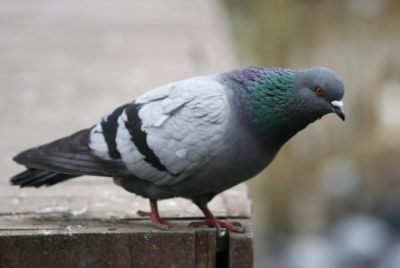Woodpecker Removal and Control
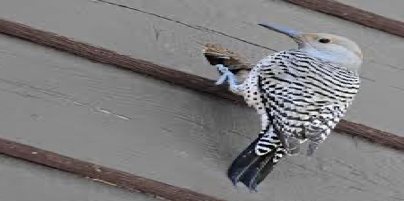
Woodpeckers are a renowned and interesting group of migratory birds because of their numerous characteristics including: loud, knocking sounds, especially in their mating season to captivate their mate. There are more than 200 species of this bird that exist around the globe. This bird has a wide range of habitats and mostly inhabits forests, woodlands and even urban settings.
Under certain situations, woodpeckers are good for the natural environment, but their hammering and drumming on dead trees, buildings, and other structures including gutters, streetlights, TV antennas and metal surfaces, is quite annoying and damaging. Preferably, they drill holes in dead trees in search of food and to burrow their nests.
Table of Contents
How Woodpeckers cause damage in Urban and Suburban Areas?
According to a research study, woodpeckers cause a great loss to the economy due to their damaging impact on homes and buildings, along with the destruction of many other man-made structures, as they drill clusters of holes to find insect larvae and burrow nests.
Drumming is associated with the woodpecker’s habit of pricking the surfaces with their sharp and piercing bill. This behavior is the worst in the spring season, which is considered their mating period. They adversely damage wooden surfaces such as sides of homes, eave boards and other structures that lead to great property damage.
Woodpeckers cause extensive damage, especially when they create clusters of holes in search of pray and burrowing nest cavities. They drill holes that can be oval, smooth or may be rough and can range from 1 to several inches deep.
In addition to that, some woodpeckers, such as sapsuckers, cause extensive damage to fruit and ornamental trees.
Natural wood (especially cedar) siding, large size, and better sound production may make houses seem like “super trees.” It has been concluded that cedar-sided homes usually experience a large amount of damage, which may reflect either the woodpecker’s selection or the frequent selection of cedar as a building material in wooded areas.
What are efficient approaches to control and prevent damage caused by Woodpeckers?
It is important to note that it is hard to get rid of woodpeckers once they get a hold on a defined territory. Since they have persistent behavior, crucial control steps should be taken as soon as the problem is identified and before the establishment of their territories.
Control approaches should include integrated damage management strategies such as repelling them from a particular site, using different frightening techniques to scare them and excluding them from a specific area.
Let’s discuss some important methods to control and prevent woodpeckers. Keep in mind that these methods have a few exceptions with different levels of success rates.
Use of Visual Repellents
There is a number of different visual repellents which can be used to scare the birds. There are different types of visual repellents. One is aluminum foil or brightly colored strips which are 2 to 3 inches wide and 2 to 3 feet in length and can be hung on the drumming site with the help of a string. It is important to ensure that these strips should be able to move freely.
Additionally, other repellents like reflective mirror tape (Bird-scare tape), which is a holographic tape that emits seven different colors, are effective tools to scare and discourage woodpeckers.
EMILY G. HARDING published an experimental study in “Journal of Wildlife Management” that was based on the control of woodpecker’s inflicted damage in homes. They installed various deterrents in random houses and evaluated that no deterrent was effective in controlling the damage but Irri-Tape was found effective in minimizing the number of holes, thus reducing damage.
It was also suggested that bright colored paints should be used to paint houses instead of natural colors as bright colors are discouraging and less attractive for woodpeckers.
Larger balloons filled with helium and painted with owl eyes have also been found effective against woodpeckers.
It has been documented that, hawk or falcon silhouettes made up of cardboard or plywood, painted black, and hung from eaves of the building near the damaged site, proved effective as compared to fake snakes, owl decoys and other silhouettes which are generally ineffective.
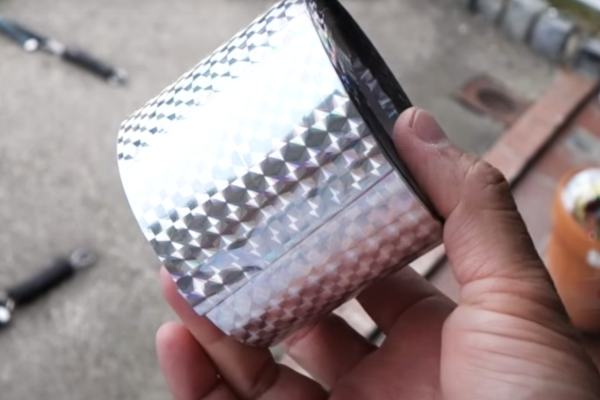
Tools to eliminate Woodpeckers
Auditory repellent, for example, loud sounds like handclapping or shooting a toy cap gun, may scare the birds. However, at times, woodpeckers can also ignore such auditory stresses. So these repellents may not give desirable outcomes.
Other methods such as spraying the birds with a high pressure water hose is effective in causing the woodpeckers to return to its natural habitat. This repeated harassment may cause the bird to leave that specific site permanently.
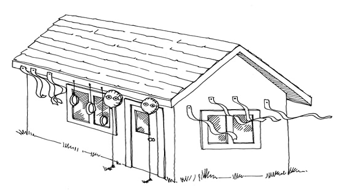
Exclusion Devices
These devices are very useful in eliminating the woodpeckers from their loveable drumming site without harming them. Netting is one of the useful tools in this regard. Nets (¾ -inch mesh) usually made up of plastic or other lightweight material must be attached to overhanging eaves and angled back to the sliding beneath the drumming site.
Protective metal shields or hardware clothing can be placed on the affected/damaged area to prevent further damage. But sometimes, birds will move to the unprotected area and continue causing damage.
Sapsuckers drill holes in the ornamental or fruit trees and cause great damage. This can be checked by covering the damaged area with the help of hard cloth or plastic mesh (1/4 -inch). Covering the whole tree with nylon netting has also been a proven method to stop the damage.
Trapping Techniques
These methods can be used if nonlethal techniques show less success or fail, but these techniques must be opted for according to legal rules and regulations and with the proper permits from local authorities.
Trapping includes placing nailed wooden based rat snap traps on the damaged area. Proper care should be taken while placing the traps and must be kept out of reach of children and pets. Walnut and almonds should be used as bait to attract woodpeckers.
Create Artificial Nests and Drumming Sites
Another surefire way to control woodpeckers is by making artificial nests. This can be done by simply using a hollow wooden box and placing it on your building or tree with an entrance hole of about 16 to 20 inches above the floor and 1 to ½ in diameter. Sawdust should be placed as floor bedding. Keep in mind that woodpeckers can also dig holes in other sites next to the nest box.
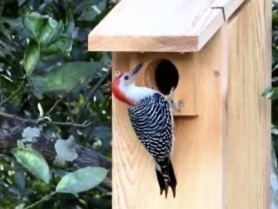
Recommendations
- Pre-planning is very much important while constructing houses/buildings, and the selection of the right construction materials for the exterior of the building must be a top priority.
- Preferably, use non-wood sidings and clapboards if possible.
- Don’t use earth-toned stain sealants outside your building as they attract woodpeckers. Try using bright colors to discourage them.
- Apply or reapply paint on existing wood sidings, don’t stain it.
- To prevent orchard or yard from sapsuckers, cover the bark with dense material and some sticky repellent along with the hanging of multiple double-sided streamers from different branches.
IMPORTANT Note!
There are many strategies to control and prevent woodpeckers from attacking buildings and important structures with varying success rates. A wise selection of the appropriate method should be made while keeping in mind that, according to the Migratory Bird Treaty Act, they are migratory and non-game birds, it’s illegal to kill them. (This may vary with state’s legal rules and regulations).
The U. S. Fish and Wildlife Service issues permit for lethal control only in extreme circumstances. Thus, prevention and exclusion are keys to limiting the potential damaging impacts of woodpeckers.
